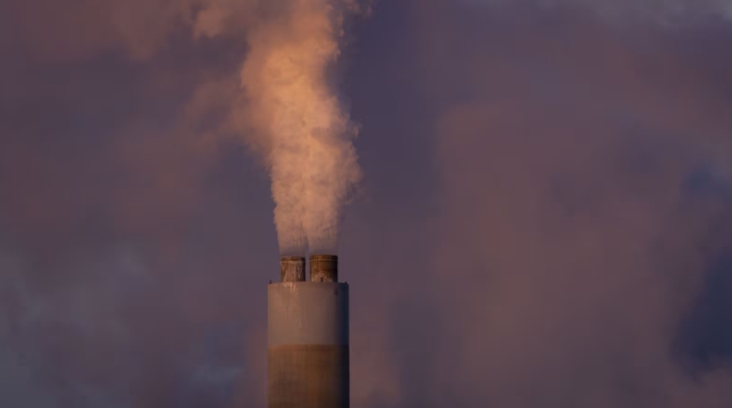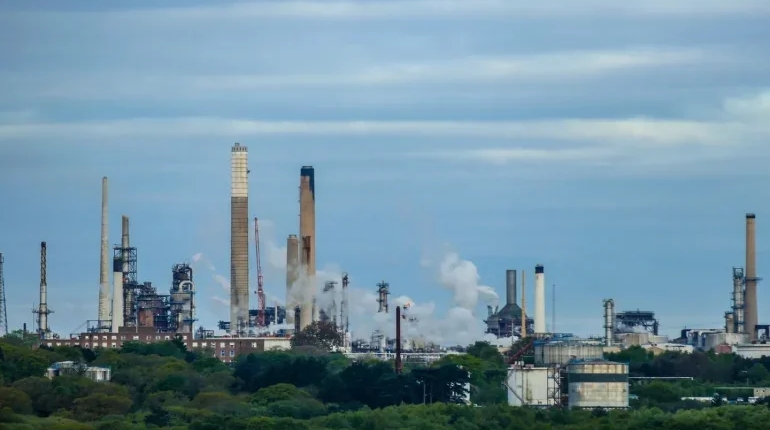 Storage tanks and gas-chilling units are seen at Freeport LNG, the second largest exporter of U.S. liquified natural gas, near Freeport, Texas, U.S., February 11, 2023. Reuters/Arathy Somasekhar/File Photo Purchase Licensing Rights
Storage tanks and gas-chilling units are seen at Freeport LNG, the second largest exporter of U.S. liquified natural gas, near Freeport, Texas, U.S., February 11, 2023. Reuters/Arathy Somasekhar/File Photo Purchase Licensing RightsPower producers in the United States have lifted natural gas-fired generation to new highs over the first nine months of 2024, sustaining the country's position as the leading driver of global natural gas consumption.
Natural gas's share in the U.S. generation system also climbed to new highs this year. Gas supplied a record 46% of total power since June, LSEG data shows, as power firms boosted output from all sources to meet rising power demand.
The fast growth pace of gas use in the U.S. undermines the country's credibility as a potential leader in energy transition efforts, and is at odds with stated ambitions to lower fossil fuel use in power generation by 2030.
Yet most key power systems within the U.S. - which is also the world's largest natural gas producer - show no signs of reducing gas use over the near term, and look more likely to continue lifting gas-fired output for years to come.
This widening discrepancy between international climate pledges and national-level power generation trends leaves the U.S. open to fresh criticism from climate advocates, who may attempt to ratchet up pressure on the U.S. to curb gas use.
Through the first nine months of the year, total power generation from gas-fired power plants in the United States was 55.6 million megawatt hours (MWh), according to LSEG.
That total was up nearly 5% from the same months in 2023, and the highest since at least 2021.
And that growth pace was well above several other major gas-consuming nations, including China, South Korea, Japan, Iran, Italy and Russia, data from energy think tank Ember shows.
Indeed, of the 10 largest gas-fired electricity producers, only Mexico, Qatar and Thailand grew gas consumption faster than the U.S. over the first half of 2024, Ember data shows.
But as those three nations generate less than a quarter of the gas-fired electricity generated by the U.S., the United States' share of global gas-powered electricity hit a new high of 30% so far in 2024, from less than 29% in 2023.
The main drivers of U.S. gas demand growth are a handful of power systems that are taking steps to reduce output from coal-fired plants in order the cut pollution, but are struggling to meet rising power demand without gas-fired output.
The PJM Interconnection system - spanning Pennsylvania, New Jersey, North Carolina and large parts of the Midwest - has the largest total share of U.S. gas-fired output, at 21%.
The Midcontinent Independent System Operation (ISO), with a service area stretching from Arkansas to North Dakota, accounts for around 13% of national gas-fired power output.
The Electric Reliability Council of Texas (ERCOT) power system accounts for another 12%, while the Florida power system accounts for around 11%.
Of those systems, Florida posted the steepest year-to-date rise in gas use, of 13.4% from the same months in 2023.
The Midcontinent and PJM systems grew gas use by around 3%, while ERCOT increased gas-fired generation by 1%, LSEG data shows.
The main stand-out among large gas-fired power systems was the SERC Reliability Corporation, which serves customers across the Carolinas, Tennessee, Georgia, Missouri and other states.
SERC gas-fired generation was 2.5% down from the same months in 2023, but was offset by higher output from system nuclear plants and a 5% climb in coal-fired output.
Gas remains the single largest power source within the SERC system, however, and so looks set to remain an integral power fuel in that system for the foreseeable future.
And gas looks set to become of increasing importance in other major U.S. power systems as well, especially in areas where outdated coal-fired generation is being phased out and needs to be replaced by other on-demand power plants.
And as long as that coal phase-out process continues, total U.S. gas-fired generation looks set to keep climbing, regardless of any country-level aims to curb power output from fossil fuels.
Only once U.S. generation capacity of clean power, including renewables, is substantially higher, and is backed by a hefty battery storage network, will U.S. power producers be able to make substantial cuts to gas-based power.
 Storage tanks and gas-chilling units are seen at Freeport LNG, the second largest exporter of U.S. liquified natural gas, near Freeport, Texas, U.S., February 11, 2023. Reuters/Arathy Somasekhar/File Photo Purchase Licensing Rights
Storage tanks and gas-chilling units are seen at Freeport LNG, the second largest exporter of U.S. liquified natural gas, near Freeport, Texas, U.S., February 11, 2023. Reuters/Arathy Somasekhar/File Photo Purchase Licensing Rights






